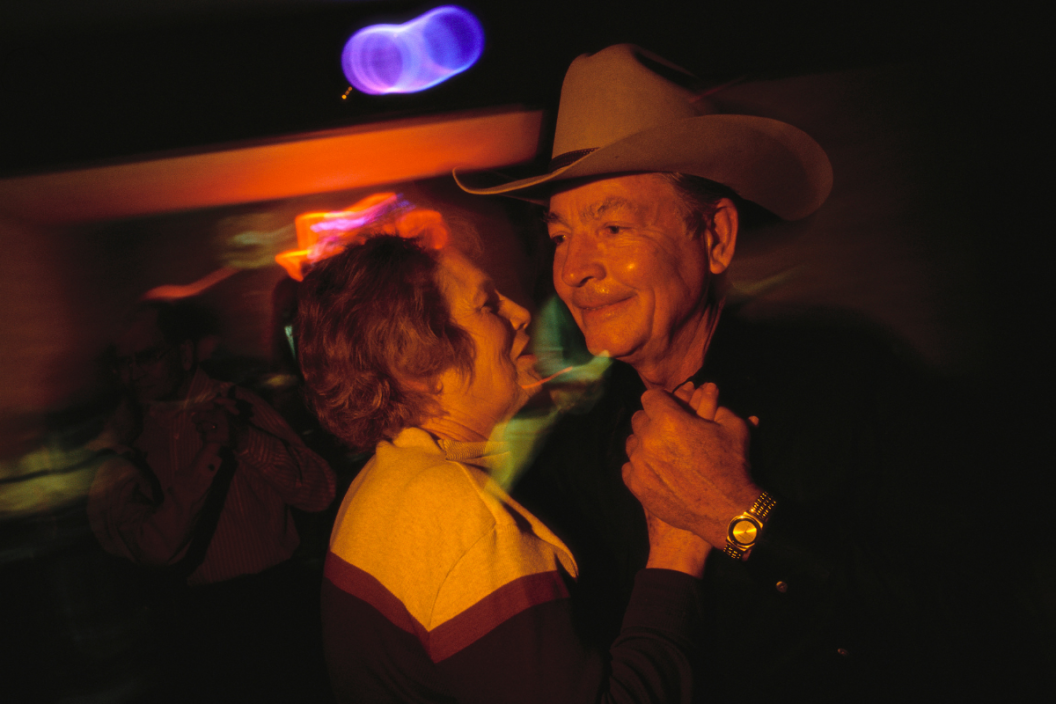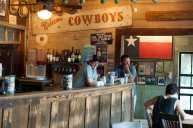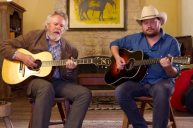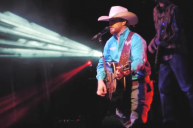There's nothing like dance hall sounds: the twang of a steel guitar, the sweet notes of a fiddle, boots shuffling across worn wooden floor boards. The Texas dance hall environment is pure nostalgia, wholesomeness and excitement rolled up into one package. From older couples who've been dance partners for decades showing they've still got it to twirling children elated to be up past their bedtime kicking up sawdust and copying their parent's dance moves, Texas dance halls are for everyone.
Videos by Wide Open Country
As a kid growing up in Texas, dance hall culture was a big part of my upbringing. Although Urban Cowboy (released in 1980) might have altered our idea of what Texas Saturday night boot scootin should look like, my earliest Texas dance hall memories are from small-town venues, like John T. Floore's Country Store in Helotes and Gruene Hall in New Braunfels. These family-friendly gathering spots promise to move dance hall culture forward for new generations to enjoy, but old buildings require upkeep and preservation if they're to endure.
Early Texans needed a place to hold a party - so they built one
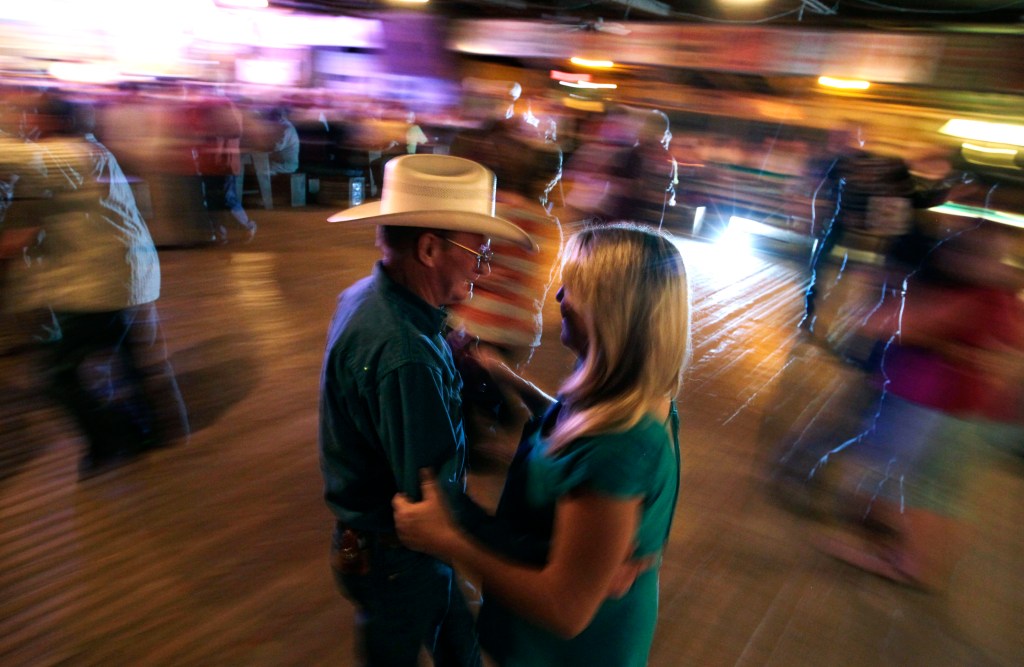
Photo by Erich Schlegel/For The Washington Post via Getty Images
Texas dance halls began as community gathering spots, event spaces, and places to throw a party. Not all these spaces have been continuously used as dance halls since they were built. Senglemann Hall in Schulenberg has been a Western Auto and a bakery and has also sat vacant for a period of time. Albert Dance Hall in Albert opened in 1892 but spent 30 years as a grain storage facility before being revived for its original purpose.
Texas dance hall culture has a prominent place in history because it is so tied to Texas-German heritage, particularly in the Texas Hill Country which was settled by Germans in the 1800s. Over time, German music evolved and blended with folk music, country music and Tejano music. The merging of the sounds of diverse cultures is a huge piece of Texas history.
Notable Texas Dance Halls
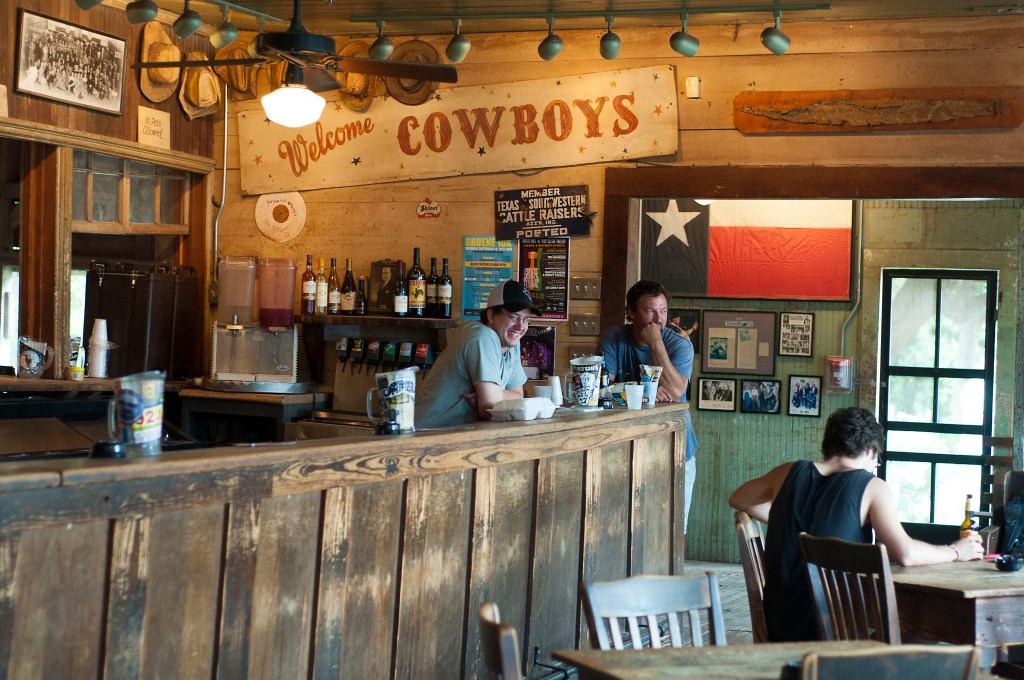
Getty Images
There are an estimated 400 dance halls currently standing in the state of Texas. Few are open on a daily basis. Some are open seasonally, on weekends, or for the occasional community dance. Some Texas Dance Halls can be hired out for wedding receptions and other special events.
Dance halls are located throughout the state, but the largest concentration of Texas dance halls can be found in the Texas Hill Country, east of San Antonio and Austin. Popular dance halls include Gruene Hall, Albert Dance Hall, Kendalia Halle, John T. Floore's Country Store, Twin Sisters Dance Hall, Neon Boots (formerly Esquire Ballroom) and Crider's Rodeo and Dance Hall.
Want to find a Texas dance hall and to enjoy firsthand? Check out this interactive map on the Texas Dance Hall Preservation homepage and find one (or more) to visit.
100-year-old buildings require upkeep
Although Texas dance halls are a piece of the past, they are not a thing of the past. Dance hall preservation becomes increasingly important as these buildings age. Many Texas dance halls are over 100 years old. Without proper care, these historic venues can fall into disrepair. Maintenance and upgrades cost money, often money the owners don't have. According to dance hall general manager Michael Miller, the wooden floors in the Albert Dance Hall haven't been refurbished since 1922. Antique floors and antique plumbing and wiring might have a certain amount of nostalgic charm, but none of these things are practical, safe, or sustainable from a business perspective.
Dance halls across Texas are quite varied. Some are solid brick while others are more rustic structures made of wood and corrugated metal. A 100+ year-old building in use in 2022 requires preservation and maintenance to keep going. Some of the more rural dance halls that don't rake in as much revenue are struggling. The recent pandemic only contributed to these struggles. Business owners had to pay several months of utilities and insurance to maintain their business during a time when community gatherings were limited, if not completely absent.
"Texas Dance Hall Preservation is a worthwhile endeavor to help ensure the cultural traditions of Texas involving music and community continue to thrive," says Daniel Rosen of John T. Floore's Country Store in Helotes. "At Floore's we try to remain relevant in the current musical landscape while also maintaining respect for the history that brought us to where we are now."
The decline of the dance hall - why did it happen?
Most dance halls started out as Saturday night gathering spots in rural Texas areas and small towns. When highways were built in the mid twentieth century, these small towns were often circumvented. As educational and employment opportunities shifted, more people left these rural communities and gravitated toward the big cities.
The interest in dance halls reemerged in the 1970's when Willie Nelson and Waylon Jennings started singing about getting back to the basics of love in Luckenbach Texas, putting this blink-and-you'll-miss-it sized town on the country music lover's map.
Preservation of Texas Dance Halls
There has been a steady interest in the preservation of Texas dance halls through the years. Some of the interest in preservation stems from the desire to protect historic buildings and see them placed on the National Register of Historic Places. Other interest in preservation stems from nostalgia and wanting to see places we've loved over time enjoyed by new generations.
"The dance halls in the Fredericksburg area provide an authentic glimpse into the past when communities would gather weekly for fun and fellowship," Fredericksburg Convention and Visitor Bureau Director of Communications Amanda Koone said. "Both the Albert, Texas and Luckenbach Texas dance halls feature great places to relax, enjoy live music and connect with the community."
There's a 501(c)(3) nonprofit dedicated to the preservation of Texas Dance Halls. Established in 2007, the Texas Dance Hall Preservation raises money for grants to distribute to dance hall owners for repairs and upgrades. They also received a grant from the Texas Historical Commission to establish an online resource library for owners of at-risk dance halls. Resources include information on how to qualify for a historic tax credit, criteria for designating a property as a state historic site and information on various grants.
"A lot of these (dance halls) were established over 100 years ago to be a community meeting spot for the communities surrounding them," Casey Jordan, TDRP Executive Director told Fox News 7 in Austin. "They are scattered across the whole state and a lot of them remain a vital part of their local economy since they were built."
According to TDRP, it takes as much as $40,000 per year to simply keep a dance hall running. Insurance, utilities, taxes, and other operating expenses have to be paid just to keep the doors open and the lights on. This amount doesn't include renovations or upgrades to these old, historic buildings.
A pandemic initiative was the Texas Dance Hall Relief Fund, which was a 40-day fundraising effort to help dance hall owners offset routine operational costs incurred when the dance halls were closed during the pandemic.
A culture and tradition worth preserving
"I think going to dance halls are going to be a Texas tradition for a long time as long as these dance halls are taken care of and preserved in a way that's meaningful," says Michael Miller, General Manager of the Albert Dance Hall. "Dance hall culture and Texas music are hugely important to Texas history."
"There is always the need for renovations, repairs, and improvements," adds Daniel Rosen of Floore's. " We always strive to find modern solutions to improve the facilities that have minimal, if any impact on the unique historical atmosphere."
Those championing dance hall preservation are working to preserve more than boards and beams. People - their stories, traditions, and music - made Texas what it is today. Preserving the community culture that goes along with dance halls is much more than just preserving a building.
